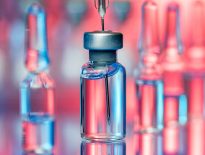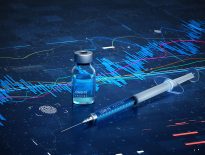Do we need to wait for the results of longitudinal scientific studies, extending to decades, to know if vaccines are safe?
It is not necessary to wait for longitudinal scientific studies to know if vaccines are safe. There are two reasons for this statement: pharmacovigilance and the history of vaccination to date.
Pharmacovigilance
Pharmacovigilance involves monitoring the safety of medicines throughout their life cycle, which allows the detection, evaluation, and prevention of side effects. Of all the drugs that are available on the market, vaccines are the most regulated and verified substances used for medical purposes.
Furthermore, vaccines against COVID-19 are subject to additional monitoring. It should be noted that COVID-19 vaccines have been tested on a much wider cohort of patients than those needed to be approved by licensed agencies, and continue to be rigorously verified. For instance, Pfizer continues to monitor volunteers in trial studies, even after having obtained full authorization of the vaccine, on August 23, 2021.
Up until that moment, the vaccine had been authorized on an emergency basis. This means that more than a year and a half has passed since the immunization of the first volunteers who were vaccinated in clinical trials. They are still being closely monitored, according to international safety standards.
With a proven efficacy of 94-95% for prevention of serious infection at the time of its approval, and with extremely rare notable side effects, mRNA vaccines against SARS-CoV-2 are close to the ideal vaccine. Yes, there are side effects after vaccination. Most of the time, it’s just fever and chills. Some people can develop serious side effects such as myocarditis or Guillain-Barré syndrome, complications that are reversible in most cases. But this is extremely rare.
All of these are known and reported in a transparent manner. Side effects occurred in the first days, at most in the first weeks after vaccination. Taking into account the mechanism of the vaccine’s interaction with the human body (the messenger RNA disintegrates rapidly once inside the human body), vaccination experts can reassure us that side effects which may occur years after vaccination are unlikely.
The history of vaccination
The history of vaccination teaches us that side effects occur in a window of up to 6 weeks after immunization.
In 1976, during the vaccination against H1N1 swine flu, rare cases of Guillain-Barré syndrome were reported approximately three weeks after vaccination. This side effect occurred in two out of one million vaccinated people. The same Guillan-Barré syndrome was linked to vaccination with the Johnson & Johnson vaccine against COVID-19, 95 cases being reported in 12.5 million administered doses. This syndrome occurred two weeks after vaccination with J&J and, in most cases, was curable.
In 2016, a meta-analysis covering 23 studies looked for evidence proving that childhood vaccines can cause diabetes. No link was found. In 2017, a summary of relevant studies disproved the hypothesis that vaccination could increase the risk of autoimmune diseases, such as multiple sclerosis. Other studies looked at large groups of patients and showed that there is no causal relationship between vaccination and the development of cancers, autoimmune diseases, or neuropsychiatric diseases, the risk of developing them being the same as the risk in the unvaccinated population.[1][2][3] As a result, history does not give us cause for concern about side effects appearing years after the administration of a vaccine.
Last year, when we helplessly witnessed the ravages caused by the virus around the globe, we hoped and prayed for a vaccine. Enthusiasm for the vaccine waned as soon as it appeared, and in my circle of acquaintances, more and more people adopted the wait-and-see strategy. Some have even imposed a one-year waiting period before deciding whether or not to be vaccinated. The period has passed and some of them are still unvaccinated. It is good to know that in the production and authorization of vaccines, the necessary standards of safety and efficacy have been met. Pharmacovigilance has done and is doing its job.
An argument from daily life
I recently met a volunteer who enrolled in phase 3 of a vaccine evaluation trial. After losing her father to COVID-19, last year, she deemed it human, beautiful, and worthwhile to somehow help prevent other people from dying. I will simply share her testimony:
“I am one of the volunteers from phase 3. You can’t even imagine how carefully and seriously everything is studied, reported, and investigated before and after vaccination.
“The world does not understand that we, the volunteers, are coming from the most diverse population samples and that no sneezing of ours goes unreported, uninvestigated, and that all the procedures that led to the approval of these vaccines are the most complex and safe ones possible. However, the vaccine tested on me is not approved yet and there is a long way to go.
“But I chose to be part of this experiment because that’s how I can do my small part in preventing people from dying. I still go for blood tests, fill in reports, and test myself countless times. The trial will end next month. I will probably continue to participate in the study for the booster dose. My father died last November of COVID-19”.
Fear of transient or serious but extremely rare side effects should be weighed against the risk of a severe form of COVID-19 (long-term disability and death).[4] To date, more than 7 billion doses have been administered all over the world. Around 49% of the world’s population has been vaccinated. We fight a common enemy and together we are stronger.
Magdalena Istrati is a gastroenterologist at the Regional Institute of Gastroenterology and Hepatology “Prof. Dr. Octavian Fodor”, Cluj-Napoca (Romania).



















